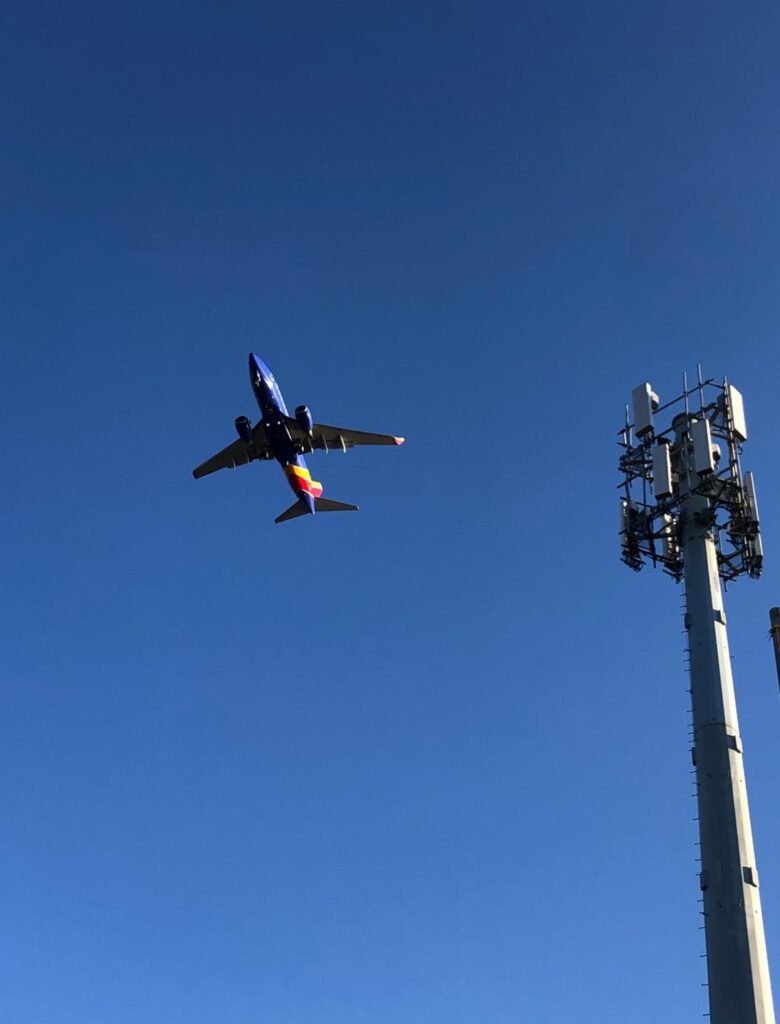U.S. Telecoms reject another 5G Delay and offer to modify airport deployment

Verizon and AT&T say they’ll turn down the power of 5G broadband signals near major airports of their choosing for six months but otherwise the rollout of the much-anticipated system will go ahead as planned on Jan. 5. In a scathing letter to Transportation Secretary Pete Buttigieg and FAA Administrator Steve Dickson released by The Wall Street Journal on Sunday, AT&T CEO John Stankey and Verizon’s Hans Vestberg chided the government officials for what they characterized as an eleventh-hour request to prevent widespread flight restrictions when they’ve had at least a year to prepare for 5G.
The FAA has concerns that 5G signals that operate in a frequency range as close as 220 MHz to the band used by radar altimeters will disrupt the function of some altimeters. The devices accurately measure the final 200 feet of altitude in aircraft conducting instrument approaches and using autoland. It has prepared NOTAMs banning the use of radar altimeter-dependent avionics and procedures that will be issued anywhere it believes the 5G signals could make radar altimeters unreliable.
In a letter to AT&T CEO John Stankey and Verizon’s Hans Vestberg on Dec. 31, Dickson and Buttigieg implored the executives to give them another couple of weeks to pull together a plan they hoped would blunt the worst potential effects of unleashing 5G.
But the telecom executives responded they they’ve already accommodated the aviation community’s concerns with a costly one-month delay of the rollout and they’re not prepared to delay it any longer. They did, however, offer to modify the rollout to implement modifications similar to those imposed by the French government on 5G providers surrounding major airports there.
“That approach—which is one of the most conservative in the world—would include extensive exclusion zones around the runways at certain airports,” Stankey and Vestberg said. “The effect would be to further reduce C-band signal levels by at least 10 times on the runway or during the last mile of final approach and the first mile after takeoff.” The modifications would be left in place until July.
Dickson and Buttigieg wanted the two weeks to draft regulations to support phased-in implementation of 5G near so-called “priority airports” across the country. After the two weeks are up, the 5G rollouts could go ahead everywhere except in “buffer zones” around those priority airports. The goal was to prevent a massive domino effect of delays and cancellations if weather requires the use of radar altimeter-reliant equipment and procedures at those key facilities and they are not available. The agency also wants to expedite Alternative Means of Compliance (AMOC) that will allow at least some aircraft with interference-resistant radar altimeters to operate where 5G is present.
“From the beginning of our discussions, our overarching goal has been to protect flight safety, while ensuring that 5G deployment and aviation operations can co-exist,” the letter says. “We believe this proposal advances this goal and avoids substantial disruptions to aviation operations—and to the flying public—in the short term.” The letter does not touch on what the long-term solution(s) to 5G interference might be but pundits speculate it revolves around who will pay to retrofit older aircraft with more modern altimeters that are shielded against the interference.
Stankey and Vestberg responded that they were not about to turn over control of the pace and structure of the rollout to the FAA when they already have the full blessing of the Federal Communications Commission (FCC), the agency responsible for assigning radio spectrum. The telecoms have always claimed the interference fear is overblown and noted that U.S. aircraft routinely fly to France with FAA approval despite the existence of 5G there and in 40 other countries.
The FCC has also maintained that there is no evidence the interference is an issue. That’s in direct disagreement with the findings of a study by the Radio Technical Committee for Aeronautics (RTCA), which first flagged the issue more than a year ago. It said there are tens of thousands of older radar altimeters at risk of interference from 5G. tinyurl.com
